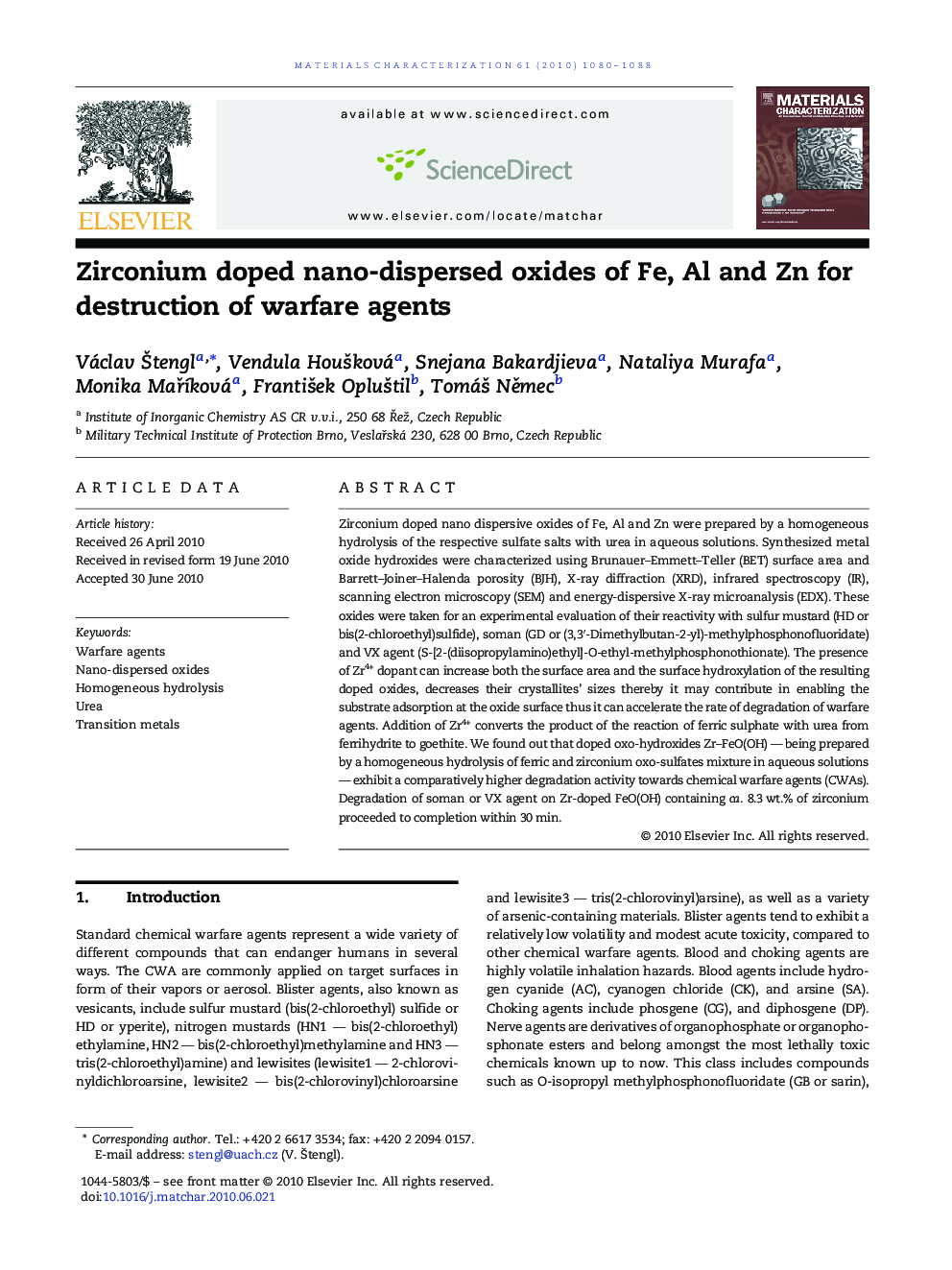| Article ID | Journal | Published Year | Pages | File Type |
|---|---|---|---|---|
| 1571765 | Materials Characterization | 2010 | 9 Pages |
Abstract
Zirconium doped nano dispersive oxides of Fe, Al and Zn were prepared by a homogeneous hydrolysis of the respective sulfate salts with urea in aqueous solutions. Synthesized metal oxide hydroxides were characterized using Brunauer-Emmett-Teller (BET) surface area and Barrett-Joiner-Halenda porosity (BJH), X-ray diffraction (XRD), infrared spectroscopy (IR), scanning electron microscopy (SEM) and energy-dispersive X-ray microanalysis (EDX). These oxides were taken for an experimental evaluation of their reactivity with sulfur mustard (HD or bis(2-chloroethyl)sulfide), soman (GD or (3,3â²-Dimethylbutan-2-yl)-methylphosphonofluoridate) and VX agent (S-[2-(diisopropylamino)ethyl]-O-ethyl-methylphosphonothionate). The presence of Zr4+ dopant can increase both the surface area and the surface hydroxylation of the resulting doped oxides, decreases their crystallites' sizes thereby it may contribute in enabling the substrate adsorption at the oxide surface thus it can accelerate the rate of degradation of warfare agents. Addition of Zr4+ converts the product of the reaction of ferric sulphate with urea from ferrihydrite to goethite. We found out that doped oxo-hydroxides Zr-FeO(OH) - being prepared by a homogeneous hydrolysis of ferric and zirconium oxo-sulfates mixture in aqueous solutions - exhibit a comparatively higher degradation activity towards chemical warfare agents (CWAs). Degradation of soman or VX agent on Zr-doped FeO(OH) containing ca. 8.3Â wt.% of zirconium proceeded to completion within 30Â min.
Related Topics
Physical Sciences and Engineering
Materials Science
Materials Science (General)
Authors
Václav Å tengl, Vendula HouÅ¡ková, Snejana Bakardjieva, Nataliya Murafa, Monika MaÅÃková, FrantiÅ¡ek OpluÅ¡til, TomáÅ¡ NÄmec,
